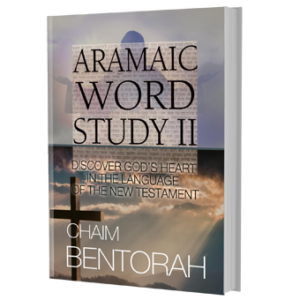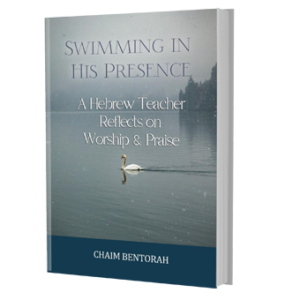
Numbers 14:14: “And they will tell the inhabitants of this land, that they have heard that the Lord is among this people, that you Lord are seen face to face, and that your cloud stands over them, and that you go before them in daytime in a pillar of cloud and in a pillar of fire by night.”
I usually spend about 3-4 hours every day studying the Word in the Greek, Hebrew and Aramaic. These little studies are the result of that time. Some have wondered what I do when I study the Word and how I can study it for so long.
Actually 3-4 hours is not nearly enough time. The Word of God is a well that never runs dry. I follow a very Judaic approach in my study. Let me just share with you the process I follow when I do my own Hebrew word study and you will begin to understand why 3-4 hours a day is not nearly enough time to do an adequate study. This is the method we seek to teach in Chaim Bentorah Ministries and that I will present in my new book, Beyond the Lexicon.
Let’s focus on the expression in Numbers 14:14, that you Lord are seen face to face. Now I don’t know about you, but that little phrase is of great interest to me. Can we see God face to face today as the children of Israel did? The answer is, of course, but we must understand what this face to face is all about which means taking an in depth word study into the Hebrew words that are used here.
The expression are seen face to face in the Hebrew is ‘ashet ‘ayin biayin nire’ah. This is literally translated which eye in eye is seen. Now the first step is to look into your lexicon. I am using the Davidson Lexicon which is found on our website. This lexicon does not give you a definition of a word, it only tells you how the word is used.
The key word here in this phrase is eye or ayin. When you look it up in the lexicon, you find that the word is used for eye, face, appearance or presence. That is usually as far as most Christians and even most Bible colleges and seminaries will take you. I am coming out with a book this summer which will be entitle Beyond The Lexicon. In this book I will show you how you can drill down deeper into a word after you have examined the word in the Lexicon, Strong’s Concordance and your Bible Dictionary. I will show you how to step in among the Jewish teachers, the ones who are the people of the Hebrew language, the guardians of this language. The ones to whom God entrusted this language to who do not depend upon a Lexicon, Strong Concordance or a Bible Dictionary but they depend upon the revelation that God gives them in their hearts, they depend upon the teaching of the Holy Spirit and not man.
The first thing we discover is that ayin is also the name of the 16th letter of the Hebrew alphabet, Ayin. The Ayin is viewed by the Jewish sages as representing spiritual insight and discernment. The shape of the letter Ayin is like two eyes attached to poles facing the left. The rabbis teach that the heart is on our left side and hence spiritual insight and discernment will influence our heart. Thus in order to love God with all our hearts we must keep our eyes on that which is of God and that is what will influence our heart towards Him. Hence one picture of Numbers 14:14 face to face would be heart to heart or seeing each other’s heart. As the Ayin represents spiritual insight we would then understand that spiritual insight is seeing into the heart of God.
The word ayin also means a spring or fountain. A spring or fountain to the ancient thought is a subterranean reservoir that feeds the oceans and rivers. Seeing eye to eye with God would then also give a picture of seeing that which is hidden that feeds into that which is revealed. To see eye to eye with God is to look into His heart and see His hidden secrets and learn how to use them in our daily lives.
My book will also show how to use the Gematria. The Gematria of the letter ayin is 130. The Gematria of the word malem is 130. Malem is used only once in Genesis 28:12. It is translated as ladder. Jacob had a dream of a ladder extending from heaven to earth. Hence the ladder is represented as standing on earth and seeing into the mysteries of heaven. 130 is also the same Gematria for Sinai. It was on top of Sinai that God revealed his hidden secrets to Moses. Ayin is spelled Ayin, Yod, Nun. This has a total Gematria of 256. The word nere’ah also has a Gematria of 256. Look back to verse 14:10 and you see: “the glory of the Lord appeared in the Tent of Meeting.” The word appear is nere’ah which is related to Ayin because they carry the same numerical value and hence this appearance also embodies the idea of God sharing his hidden secrets or knowledge. The Talmud teaches that the people were afraid to stand in that cloud or glory of God because all their hidden secrets became know to each other. I mean would you want to enter the glory cloud when the person next to you will know your heart and know that you are thinking?
Well, this has taken me over two hours of study to reach this point. I still have about one hour left before I go to work and I have already gone beyond my limit for the length of this little study that I will post. I will spend the next hour plus whatever free time I get today drilling down even further and meditating on this passage and I know I will still only have taken a peek below the surface. But just this brief study has shown that when the Lord is seen face to face, it does not necessarily mean a literal seeing face to face, I mean God does not have a face and the word seen is ra’ah which can also be spiritual sight, but I think I have given a good case that this could mean that when we see eye to eye with God we are being given a revelation into the hidden mysteries of God. With that bit of understanding I am quite motivated to use whatever free time I have today to continue in my study of Numbers 14:14.
Perhaps you will be motivated to move beyond your lexicon, Strong’s or your Bible Dictionary and purchase my new book Beyond the Lexicon, due out sometime this summer.







vcruz53
when is the material coming out ?
Your new book intrigues me. Does it go beyond the study manual you already have?
As a student who never has enough, will there be a collection of idioms in the future? Or would you suggest a source that I may use going forward?
Thank you,
Gadar